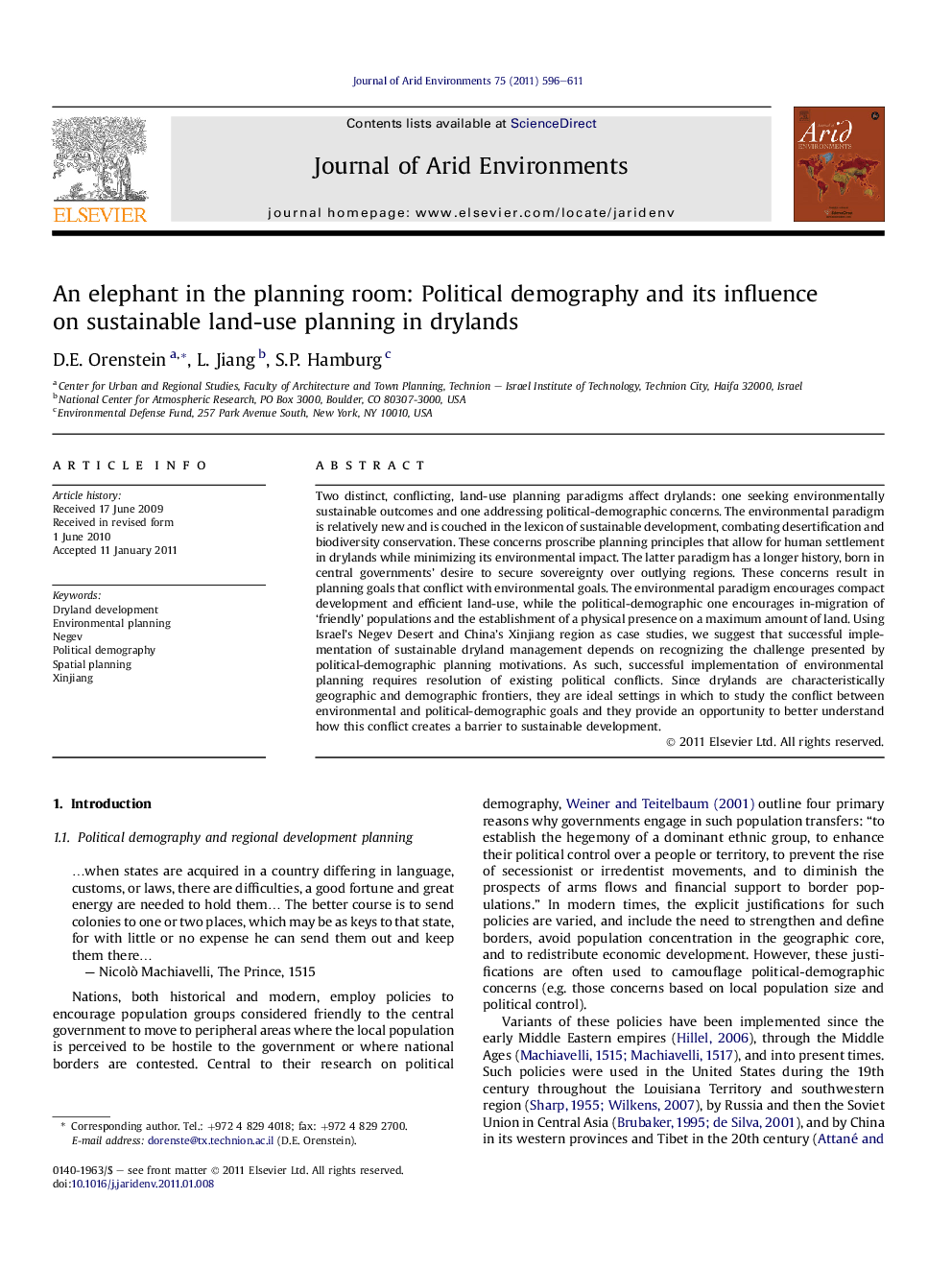| Article ID | Journal | Published Year | Pages | File Type |
|---|---|---|---|---|
| 4393748 | Journal of Arid Environments | 2011 | 16 Pages |
Two distinct, conflicting, land-use planning paradigms affect drylands: one seeking environmentally sustainable outcomes and one addressing political-demographic concerns. The environmental paradigm is relatively new and is couched in the lexicon of sustainable development, combating desertification and biodiversity conservation. These concerns proscribe planning principles that allow for human settlement in drylands while minimizing its environmental impact. The latter paradigm has a longer history, born in central governments’ desire to secure sovereignty over outlying regions. These concerns result in planning goals that conflict with environmental goals. The environmental paradigm encourages compact development and efficient land-use, while the political-demographic one encourages in-migration of ‘friendly’ populations and the establishment of a physical presence on a maximum amount of land. Using Israel’s Negev Desert and China’s Xinjiang region as case studies, we suggest that successful implementation of sustainable dryland management depends on recognizing the challenge presented by political-demographic planning motivations. As such, successful implementation of environmental planning requires resolution of existing political conflicts. Since drylands are characteristically geographic and demographic frontiers, they are ideal settings in which to study the conflict between environmental and political-demographic goals and they provide an opportunity to better understand how this conflict creates a barrier to sustainable development.
Research highlights► Conflict resolution is a pre-requisite to successful implementation of environmental policies. ► Political demography and environmental paradigms influence land-use policy in Israel and China. ► Land use promoted by political demography differs from that suggested by environmental paradigms. ► Realization of environmental policies is challenged by political demographic concerns.
